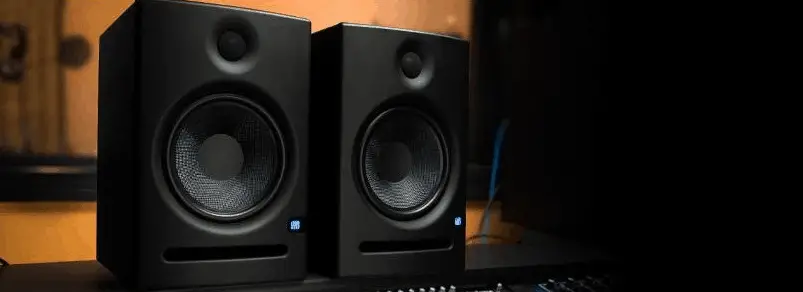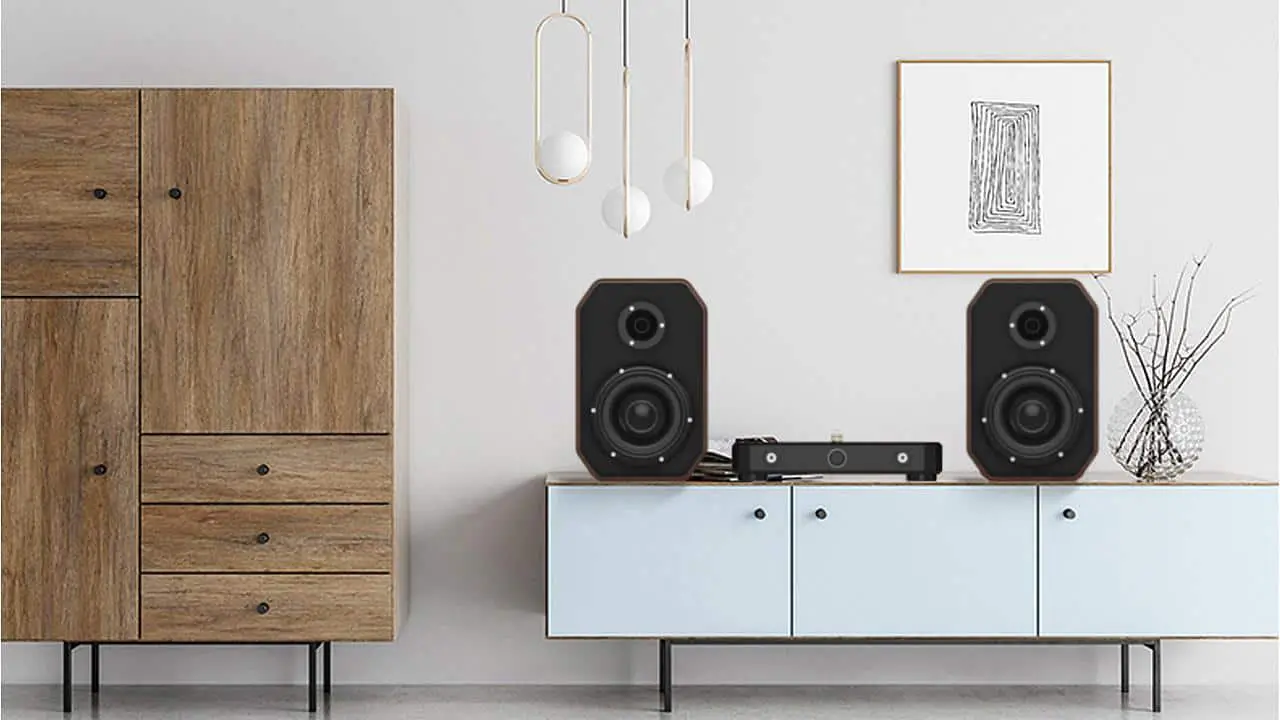Guide for Passive vs Active Speaker
Maybe when you buy a speaker, the first thing you consider is a passive speaker, because it has a player, an Amp, and a complete system. However, for those who are new to audio and just getting started, active speakers have their advantages. Although passive speakers are mainstream, active speakers also have many diehard fans. What is the reason? If the difference between the materials and design of high- and low-end equipment is excluded, what are the advantages and disadvantages of the active and passive design alone? The following is a brief analysis for you.
What is Active Speaker ?
Active speaker, that is, the speaker has built-in splitting and amplifying circuits, and only need to connect the power supply and input music signals to make a sound. Many monitor speakers in the studio are active speakers. But don’t think Active Speaker is synonymous with professional. Because everyone’s ordinary computer speakers, Bluetooth speakers, etc. are actually active speakers.
One of its significant features is the built-in electronic crossover system and its own power amplifier. “Active speakers” usually mark the output power, input impedance, and input signal level of the built-in amplifier. So all you have to do is connect the power supply, And the audio cable can make a sound.
Pros and Cons of Active Speaker
- Pro 1: no power amplifier, simple system
Due to its own power amplifier, there is no need to connect the amplifier. The whole system is simple and easy to get started. Just connect a computer, Blu-ray player, CD player, etc. to play. You don’t need to consider professional issues such as power and impedance matching. - Pro 2: save space
Besides, the active speaker does not need to be connected to the amplifier. So it saves a lot of space for equipment. For desktop audio systems, they are quite suitable. - Pro 3: Complete support and guaranteed sound quality
In addition to the built-in amplifier, the active speaker also has an electronic crossover system and decoding system, which can highly restore the original sound. The distortion is smaller and will not change due to the influence of factors such as wire and power amplifier. - Con 1: The speaker needs to adjust the volume independently
In the design of some active speakers, the output of the left and right channel speakers needs to be adjusted independently, so it will be a little troublesome to make the volume adjustment. It would help if you fine-tuned the left and right speakers. - Con 2: need to connect the power line and the signal line
Active speakers do not require an amplifier, but in addition to the signal line, each speaker must be connected to an additional power cord. Since each speaker has a built-in independent amplifier and electronic distributor, etc. each speaker requires a separate power supply. In other words, if you want to set up a speaker system of 5.1.2 or 7.1.4, you must have 8 or 12 independent power supplies to make it work, which requires higher stability of the power supply. Of course, if only used for computer desktop, the 2.0 system only needs two power supplies. Some only need one.

What is Passive Speaker ?
Most of the two-channel HiFi speakers commonly seen by everyone are passive speakers. Contrary to active speakers, there is no built-in amplifier circuit, and the sound output needs to be driven by the output of the power amplifier. Compared with traditional active speakers, most of them are bookshelf design. Passive speakers have various styles, including tower, bookshelf, satellite, etc.
There is no amplifier circuit inside, but there will be a frequency division network and an impedance compensation circuit. It cannot be plug-and-play and needs to be pushed by the power amplifier before it can be used. The entire system is relatively more complicated.
Pros and Cons of Passive Speaker
- Pro 1: More flexibility in tuning
Due to the need to connect the amplifier, the sound of the passive speaker will be significantly affected by the connected equipment and the wire. The same set of speakers, in different places, the listening experience is entirely different. The need to connect the power amplifier is more affected by equipment such as amplifiers and wires. However, with more flexibility in tuning, you can use the characteristics of signal cables and amplifiers to complement or enhance the performance of the speakers. - Pro 2: Only need to connect the audio cable
Although it is necessary to connect the amplifier, the passive speaker does not need to be connected to an additional power cord. Instead, it only needs to be connected to the amp with a signal cable, and the latter can be driven directly to produce sound. - Pro 3: Bi-Amp, Bi-Wire diverse connection combinations
Some passive speakers can support Bi-Amp and Bi-Wire connection methods and improve the speaker’s performance through wire connection. - Con 1: The system is relatively complex. Unlike the “active speakers” that are plug-and-play, you need to have a more professional knowledge reserve to match your own.
- Con 2: more space. Not applicable in some scenarios, such as the computer desktop.
Do Passive Speakers Cost More?
Passive speakers need to be supported by power amplifiers, and the influence of wires is also quite significant. So everyone will think that the cost will be higher than the active speaker. But in fact, the cost of active speakers is not low. Some monitor-level or professional-level active speakers also need better pre-level decoding players as well as pre-amp, and the price is not economical at this time. Therefore, there is no question of who costs more.
Passive vs Active Speaker, Which Sound Quality is Better?
To answer this question, there must be many pre-conditions.
Pre-condition 1:
For the same active speaker, if the built-in amplifier is removed and changed to a passive speaker, the sound quality will usually be slightly better.
Since the built-in power amplifier of the speaker will occupy a particular space and generate heat, these factors have a slight impact on the sound quality. Of course, some active speakers will make the cabinet slightly larger to compensate for the space of the power amplifier. The influence of the area is eliminated, and only the influence of temperature is left. The effect of temperature on sound quality is minimal. Although it exists theoretically, no one can hear it.
Pre-condition 2:
Comparing to the limiting and cabinet volume of the active speaker’s are limited, the upper limit of the passive speaker’s sound quality is higher than that of the active speaker.
Passive vs Active Speaker, Which are Flexible and Easy to Upgrade?
The audio system composed of active speakers has no flexibility, and can only be replaced if the upgrade or dissatisfaction is required. The most significant feature of passive speakers is their flexibility and upgradeability.
Passive speakers can replace the power amplifier or speakers to adjust the performance and characteristics of the entire system. For example, a set of passive boxes can not meet their requirements. You can add another set. The extra boxes go to the home theater.
Conclusion
Active speakers are relatively simple to use, take up little space, but cannot be upgraded. If problems occur and maintenance is inconvenient, the upper limit of sound quality is lower than passive speakers.
Passive speakers are flexible to use, easy to upgrade, and playable, but take up more space and have a higher sound quality ceiling. With the popularization of digital power amplifiers (the size of digital power amplifiers is an order of magnitude smaller than previous equivalent power amplifiers), the inconvenience that the power amplifier takes up space is minimal.
